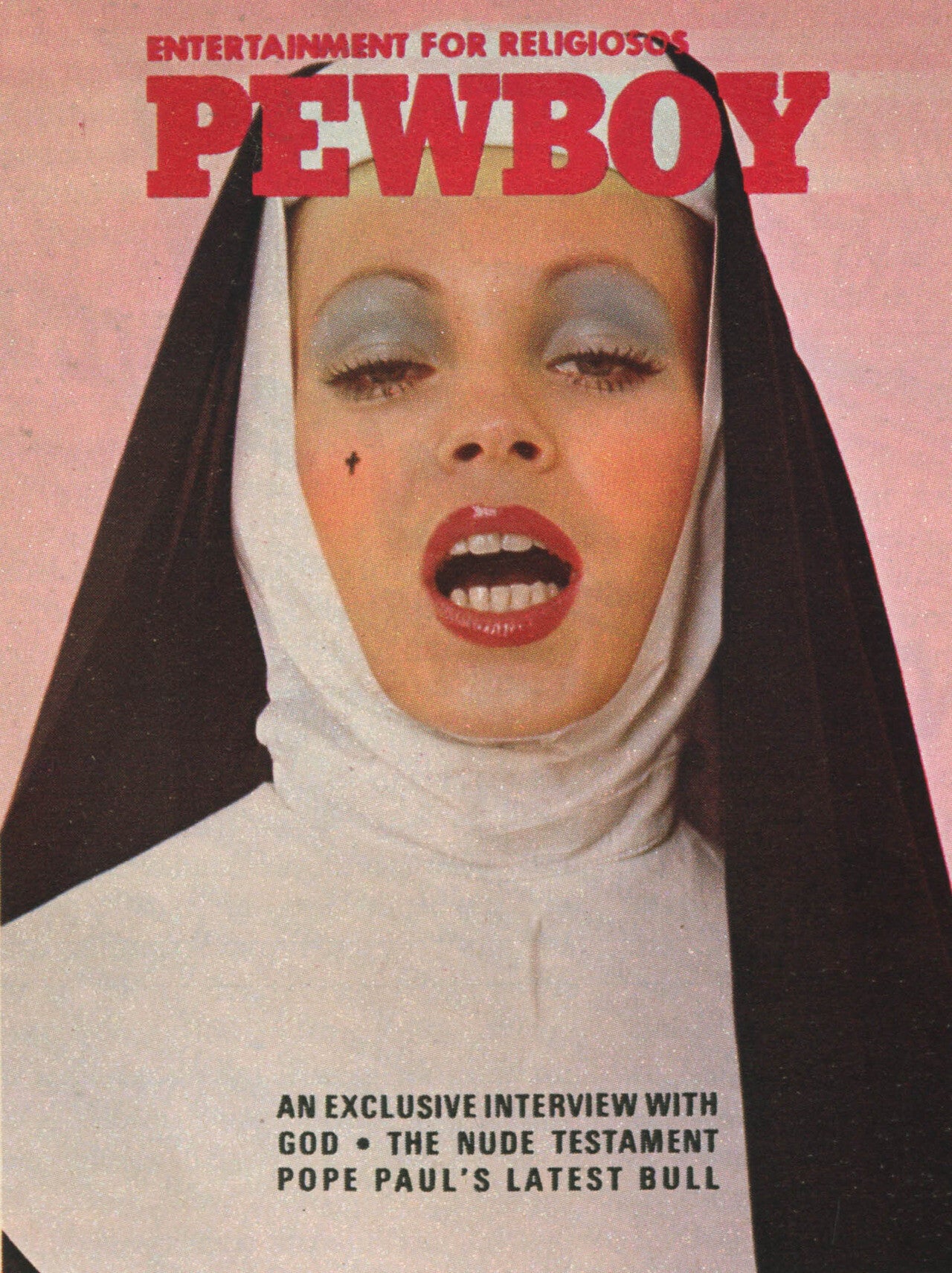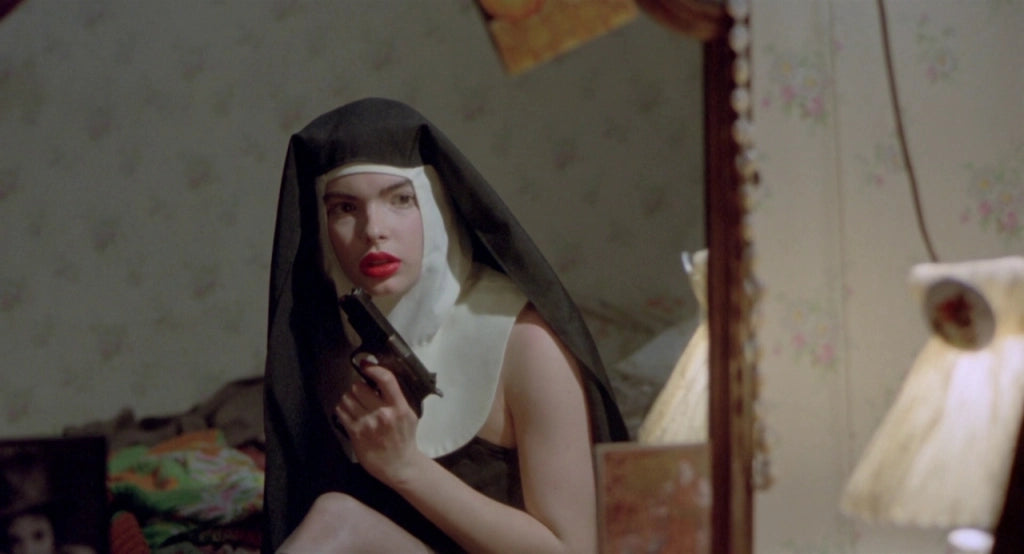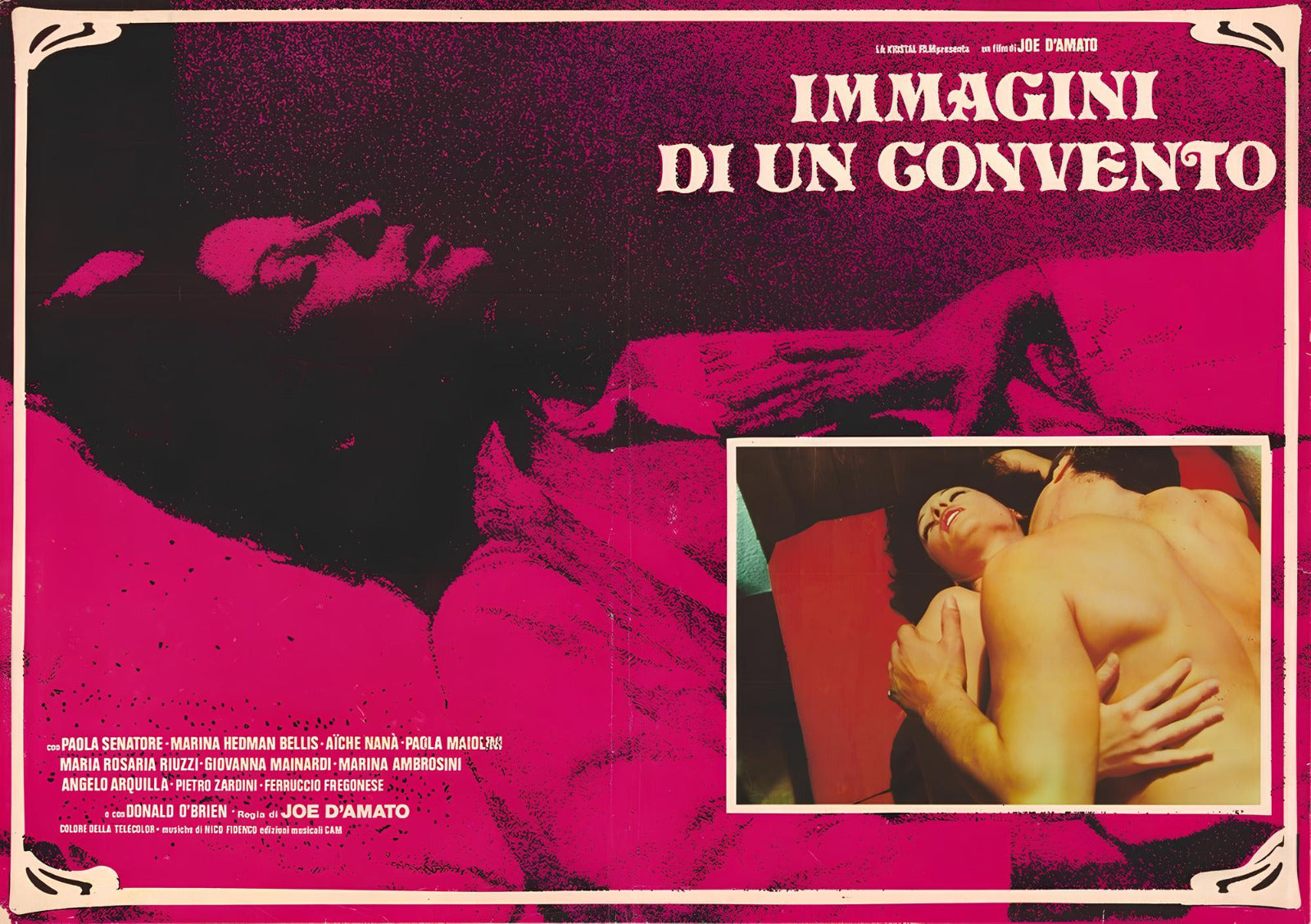Rihanna's nun cover for Interview magazine is only the latest chapter in the culture industry’s fascination with Nunsploitation, the cult film genre that since the 1970s has been playing with our religious taboos.

Nuns, cinema and sin. Who would have thought that these elements could seamlessly coexist in harmony? Rihanna has recently reminded us of this elective affinity in the photo editorial for the Spring 2024 issue of Interview, the cult magazine founded by Andy Warhol in 1969.
In the photo shoot by photographer and art director Nadia Lee Cohen (who has previously worked with the likes of A$ap Rocky, Beyoncé, Kim Kardashian, and Lana Del Rey, among others) the American pop star wears a nun's dress with provocative and seductive flair. Despite its explicit nod to the satirical nun cover of Pewboy, a Catholic-edged parody of the more notorious Playboy magazine, the shots, which needless to say became a social media sensation in no time, take us back to the origins of popular culture's fascination with the taboo of seclusion and monastic chastity.

Interview – Spring 2024 cover story featuring Rihanna, by Nadia Lee Cohen.
The iconography adopted, based on the kinky (and at times blasphemous) overturning of century-old religious canons, is certainly not new. What one may not know is that it has its roots in the Italian and European cinema of the 1970s and, in particular, in a genre as niche as it is coveted: Nunsploitation.
The genre, as its name suggests, was born as a rib of the broader (and at the time successful) Sexploitation genre: low-budget films that appealed to the erotic fantasies of an audience and population that was often still sexually repressed in the eye of public morality.

The satirical Pewboy Magazine cover nodding to Nunsploitation that inspired Nadia Lee Cohen's Rhianna shoot for Interview.
In particular, Nunsploitation focuses on the lives, temptations and torments of nuns within convents and religious institutions, most of them set in the XVI century. Through provocative and suggestive images, Nunsploitation explores themes such as sexual repression, sin, female homosexuality, guilt and desire.
Precisely because of this link with Catholicism, Nunsploitation has had greater proliferation in Mediterranean nations with strong religious connotations, such as Spain and Italy.

Immagini di un convento, Joe D'Amato, 1979.
The myth of the sinning nun, on closer inspection, is in fact rooted in the literary tradition of these nations, as in the famous character of the Monaca di Monza of Alessandro Manzoni’s I Promessi Sposi (The Betrothed) fame. Although the first example of a film on the theme can be traced back to Scandinavia in the 1920s with Häxan, followed by Poland in the early 1960s (Mother Joan of the Angels, 1961), it was the 1970s that represented the boom of the genre, which also reached Mexico, the United Kingdom and Japan.
The iconographic power generated by the juxtaposition of religious ornaments and eroticism, coupled with titles that were often deliberately hyperbolic and provocative, contributed over the years to making Nunsploitation a cult genre, redeeming it also in the eyes of film critics and broader industries such as fashion and photography.

Ms. 45 by Abel Ferrara, 1981, merges Nunsploitation with thriller and horror.
Among the most celebrated titles are Flavia, la monaca musulmana (1974), Le monache di Sant’Arcangelo (1973), Flavia l’eretica (1974), Interno di un convento (1978), Sister Emanuelle (1977), yet another chapter in the series starring Laura Gemser, The Nun and the Devil (1973), but also the Japanese-made Cloistered Nun: Runa’s Confessions (1976) and Sins of Sister Lucia (1978), also touching upon horror, esotericism and thriller. The latter has its landmark titles in two films: the moodboard-friendly Ms.45 (1981) by Abel Ferrara with Zoë Tamerlis and Killer Nun – Suor Omicidi, a 1979 film by Giulio Berruti starring Anita Ekberg, who nearly twenty years after the success of La Dolce Vita went back to wearing the nun look.
Just as the Fellini's masterpiece teaches, the iconography of the nun has always fuelled the curiosity of photographers and art directors, who contributed to update the canons of the religious uniform through the years. In music, Luciano Tallarini made history when dressing Loredana Bertè up as an enigmatic nun on the cover of her 1982 album Traslocando on CGD. And so did international artists such as The Deviants with their self-titled 1969 album and Fleetwood Mac with The Pious Bird of Good Omen, released in the very same year, but also hardcore punk legends Black Flag with their sophomore record Sip It In (1984). All the way to contemporary cinema, with works such as Paul Verhoeven's Benedetta (2021), Corin Hardy's The Nun (2018), and Immaculate (2024), a recently released film directed by Michael Mohan that explicitly reconnects with the Nunsploitation tradition through music, such as the track “The Red Queen Kills Seven Times (Reprise)” by Bruno Nicolai.

Loredana Bertè – Traslocando, back cover. Art direction by Luciano Tallini, 1982.
Undoubtedly, the fascination of this genre also lies in its soundtracks, which the masters of cinematica often composed under pseudonyms to, how shall we say, preserve a certain integrity in the face of public morality. This is the case, among others, of Immagini di un convento, a 1978 score by Donimak, the stage name used by the unsuspected Nico Fidenco. Composed for the film directed by Exploitation cinema legend Joe D'Amato (aka Aristide Massaccesi), the OST – part of the CAM Sugar catalogue – also sees the collaboration on the arrangements of Giacomo Dell'Orso, husband of vocalist Edda, who is also featured on the album.
The Nadia Lee Cohen-directed Interview cover story, hence, is only the latest of a series of works, ranging from cinema to fashion, that continue to fuel the debate around Nunsploitation and to show that the fascination of our culture for sinning saints is very much alive.

Immagini di un convento, Joe D'Amato, 1979.
Opening image: Immagini di un convento, Joe D'Amato, 1979.